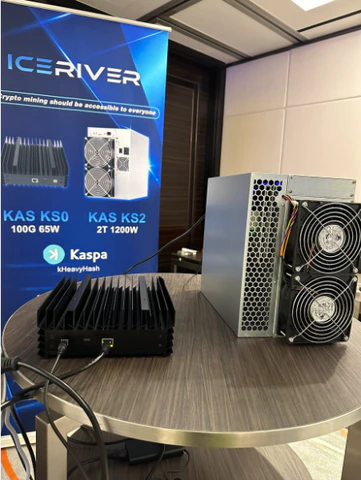Proof-of-stake and Proof-of-work are two terms that are integral to the world of cryptocurrencies. These are two different concepts that are essential to crypto transactions and security. They lie at the core of blockchain technology and how it operates. Both Proof-of-Stake (PoS) and Proof-of-Work (PoW) are consensus IceRiver KS2. Although they operate in different ways, both ensure that the users are honest and maintain transparency. They are programmed to incentivize good users, and similarly, they can make it extremely painful and expensive for the bad ones. They help in keeping a check on frauds such as double-spending.
A general idea of ‘mining’ helps understand the difference between the two consensus mechanisms. In the case of a Proof-of-Work (PoW) mechanism, crypto transactions are verified through ‘mining.’ In Proof-of-Stake (PoS), ‘validators’ are selected through specific rules and depending on the ‘stake’ they own in the blockchain. Cryptocurrencies are programmed to be decentralized and distributed. A worldwide network of computers can see and verify the transactions on a blockchain. Computers on the network must agree on what happened before verifying the transactions. The immutable nature of Blockchain prevents any computer(s) from committing fraudulent activities of some kind since it will be caught instantly.
Proof-of-work (PoW) consensus mechanism is a competition among miners to solve cryptographic puzzles and validate the transactions on the blockchain. In doing so, they earn block rewards from the blockchain in the form of its native crypto. For instance, Bitcoin is a PoW blockchain where miners earn $BTC as a reward for their services. It is the older one among the two and powers blockchains like Bitcoin ($BTC), Ethereum ($ETH), etc. Ethereum is already in a state of transition from PoW to a PoS consensus mechanism, and the process will be complete by August 2022.
The PoW mechanism has powerful advantages that simple yet valuable blockchains like Bitcoin could utilize. As the value of a cryptocurrency grows, more miners are incentivized to join the network. These miners provide better security and power for the blockchain. However, the enormous processing power required in PoS mechanisms makes it impractical for an individual or a group to use it in an extensive blockchain network. Moreover, it is an energy-intensive process that is detrimental to scaling to accommodate the vast number of transactions taking place on the blockchain.
In the case of Proof-of-Stake (PoS), random validators are selected to ensure that the transactions on the blockchain are reliable and safe. These validators lock up a specific portion of their crypto to become a validator. Their stake in the blockchain compels them to be careful watchdogs of the network. Newer blockchains like Cardano ($ADA) and Tezos ($XTZ) use PoS consensus mechanisms.
Ethereum developers understood quite early that PoW would present challenges regarding scalability later when the number of transactions increases. Unlike Bitcoin, Ethereum processes multiple Decentralized Finance (DeFi) transactions, NFT minting, crypto transactions, etc. With the increase in traffic, transaction costs or gas fees on Ethereum have spiked notably.
Their only solution was to transition to a PoS mechanism from PoW. The transition is scheduled to complete by August 2022. Cryptocurrencies including Tezos, Atmos, and Cardano all use PoS consensus mechanisms. Their common objective is to maximize speed and efficiency while lowering fees.
